Carlsbad, CA Pollen and Allergy Report for Summer 2023
Pollen Allergy Trends in Carlsbad, CA
When is pollen lowest in Carlsbad, CA?

October
Lowest month total PPM
Avg. PPM
When is pollen highest in Carlsbad, CA?

January
Highest month total PPM
Avg. PPM
How does pollen in Carlsbad, CA compare to California?
Carlsbad has a higher average PPM than the state of California.
Carlsbad yearly avg PPM:
California yearly avg PPM:
How does pollen in Carlsbad, CA compare to the USA?
Carlsbad has a lower average PPM than the USA.
Carlsbad yearly avg PPM:
USA yearly avg PPM:
Is pollen worse this year in Carlsbad, CA?
Spring 2023 was worse than spring 2022.
Spring 2023 PPM:
Spring 2022 PPM:
Average PPM in Carlsbad, CA
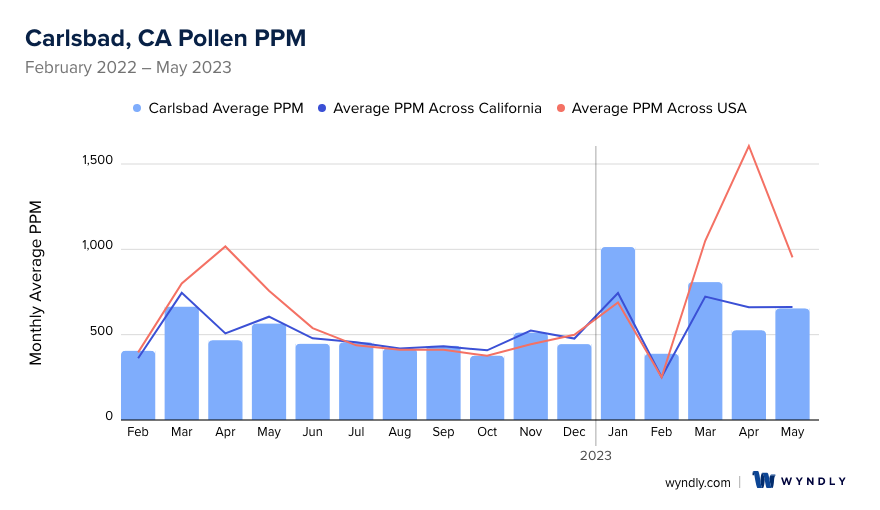

Carlsbad, CA Pollen and Allergy Breakdown by Month
Grass
When is grass pollen highest in Carlsbad, CA?
May has the highest grass pollen in Carlsbad, CA with an average PPM of
When is grass pollen lowest in Carlsbad, CA?
December has the lowest grass pollen in Carlsbad, CA with an average PPM of
Tree
When is tree pollen highest in Carlsbad, CA?
March has the highest tree pollen in Carlsbad, CA with an average PPM of
When is tree pollen lowest in Carlsbad, CA?
August has the lowest tree pollen in Carlsbad, CA with an average PPM of
Weed
When is weed pollen highest in Carlsbad, CA?
November has the highest weed pollen in Carlsbad, CA with an average PPM of
When is weed pollen lowest in Carlsbad, CA?
February has the lowest weed pollen in Carlsbad, CA with an average PPM of
Carlsbad, CA Pollen Monthly Breakdown by Pollen Type

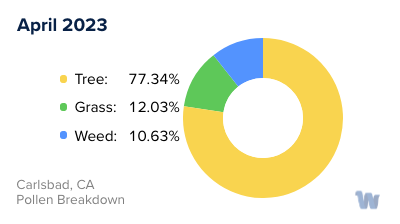
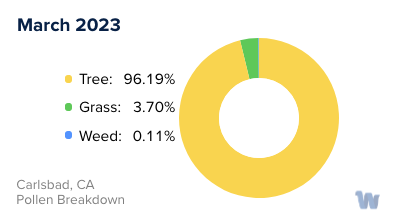


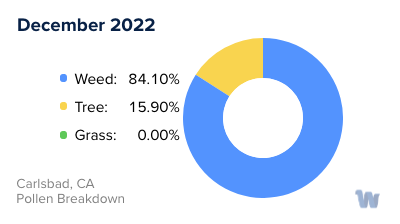
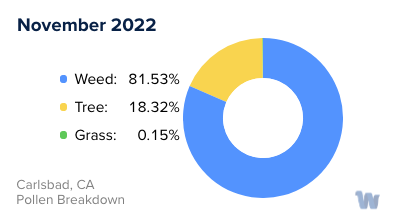
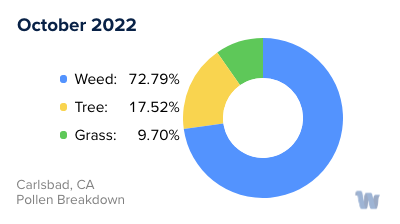

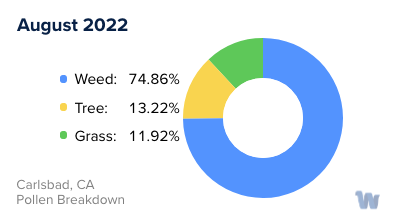

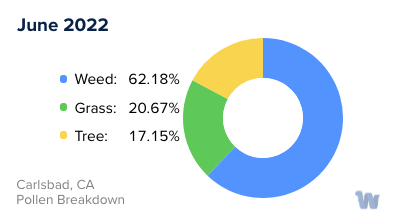

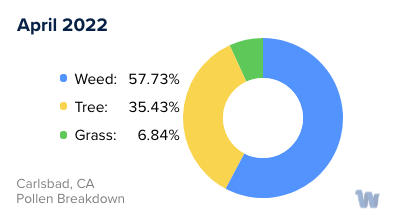

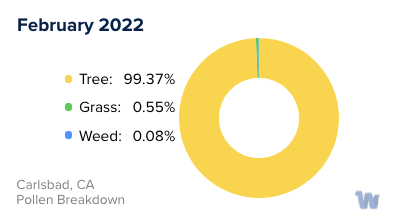
Pollen and Hay Fever in Carlsbad, CA
Carlsbad, California, known for its pleasant climate and beautiful outdoor scenery, is also home to various types of pollen that can trigger allergies and hay fever in susceptible individuals. Pollen allergies, commonly referred to as hay fever or allergic rhinitis, occur when the immune system overreacts to pollen particles, leading to a range of bothersome symptoms.
In Carlsbad, several types of pollen are prevalent throughout the year, with varying levels of intensity during different seasons. One of the primary culprits is tree pollen, which tends to be most abundant during the spring months. Common tree pollens in Carlsbad include oak, sycamore, eucalyptus, and pine. The wind, prevalent in the region, can carry these pollen particles over long distances, exacerbating allergic reactions.
As spring transitions into summer, grass pollen becomes a prominent trigger for allergies. In Carlsbad, Bermuda grass, Timothy grass, and Johnson grass are commonly found and produce high levels of pollen. Grass pollen allergies can cause symptoms such as sneezing, runny nose, itchy eyes, and throat irritation.
During late summer and early fall, weed pollen becomes a major concern for individuals with hay fever. Ragweed, sagebrush, and pigweed are common weed pollens in Carlsbad that can provoke allergic reactions. These pollens are particularly lightweight, allowing them to travel easily through the air and cause discomfort for those susceptible.
It is important for Carlsbad residents with pollen allergies to be aware of the seasonal patterns of these allergens and take necessary precautions. Monitoring local pollen forecasts, staying indoors during peak pollen times, using air purifiers, and keeping windows closed can help reduce exposure to pollen particles. Additionally, wearing sunglasses and regularly washing clothes after spending time outdoors can minimize contact with allergens.
Understanding the types of pollen prevalent in Carlsbad and the seasons during which they are most active can empower individuals to manage their hay fever symptoms more effectively. By staying informed and adopting appropriate preventive measures, individuals with pollen allergies can still enjoy the beauty of Carlsbad's outdoor environment while minimizing the impact of their allergies.

